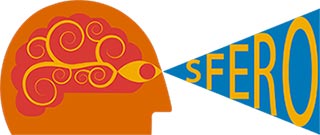Contribution of stereopsis, vergence, and accommodative function to the performance of a precision grasping and placement task in typically developing children age 8–14 years
Highlights
- •
Binocular viewing is associated with more efficient prehension performance in typically developing children and adolescents.
- •
Better fusional vergence is associated with higher peak velocity of the reaching movement.
- •
Lower stereoacuity threshold is associated with shorter grasp duration.
- •
Optimal development of upper limb reaching and grasping movements relies on normal binocular vision.
Abstract
Upper limb reaching and grasping movements are performed more efficiently during binocular viewing; however, the distinct contribution of stereopsis, fusional vergence, and accommodation (binocular facility, amplitude and accuracy) has not been examined in typically developing children. This study examined binocular visual function in a cohort of 57 typically developing children, 8 to 14 years old. Hand kinematics were recorded using a motion capture camera while children performed a prehension task involving threading a bead onto a needle. Results showed that different aspects of binocular vision contribute to the control of distinct phases of upper limb movements. Specifically, fusional vergence was associated with higher peak reach velocity, stereoacuity was associated with shorter grasp execution, and accommodation was associated with shorter placement duration. These findings suggest that different aspects of binocular vision play an important role in optimizing the control of distinct phases of prehension movements during development.
Introduction
Normal binocularity provides important input for the planning and execution of upper limb movements, such as reaching and precision grasping in adults (Fielder & Moseley, 1996; Grant, Melmoth, Morgan, & Finlay, 2007; Jones & Lee, 1981; Melmoth & Grant, 2006; Servos, Goodale, & Jakobson, 1992). Furthermore, research demonstrated that fusional vergence and stereoacuity are associated with the control of distinct phases of a prehension movement, namely, reach (i.e., transport) and grasp (Melmoth, Storoni, Todd, Finlay, & Grant, 2007; Mon-Williams & Dijkerman, 1999). In typically developing children, binocular viewing is also associated with improved performance of prehension (Alramis, Roy, Christian, & Niechwiej-Szwedo, 2016), which is more evident in older children (Suttle, Melmoth, Finlay, Sloper, & Grant, 2011; Watt, Bradshaw, Clarke, & Elliot, 2003). Given that improvements in binocular vision extend beyond the first decade (Giaschi, Narasimhan, Solski, Harrison, & Wilcox, 2013), it is possible that maturation of binocular vision contributes to improved fine motor skill performance. However, it is currently unknown whether stereoacuity and fusional vergence provide a distinct contribution to the control of reaching and grasping in children. Therefore, the goal of this study was to assess the contribution of stereopsis, fusional vergence, and accommodation to the performance of a precision manipulation task in typically developing children, 8 to 14 years old.

